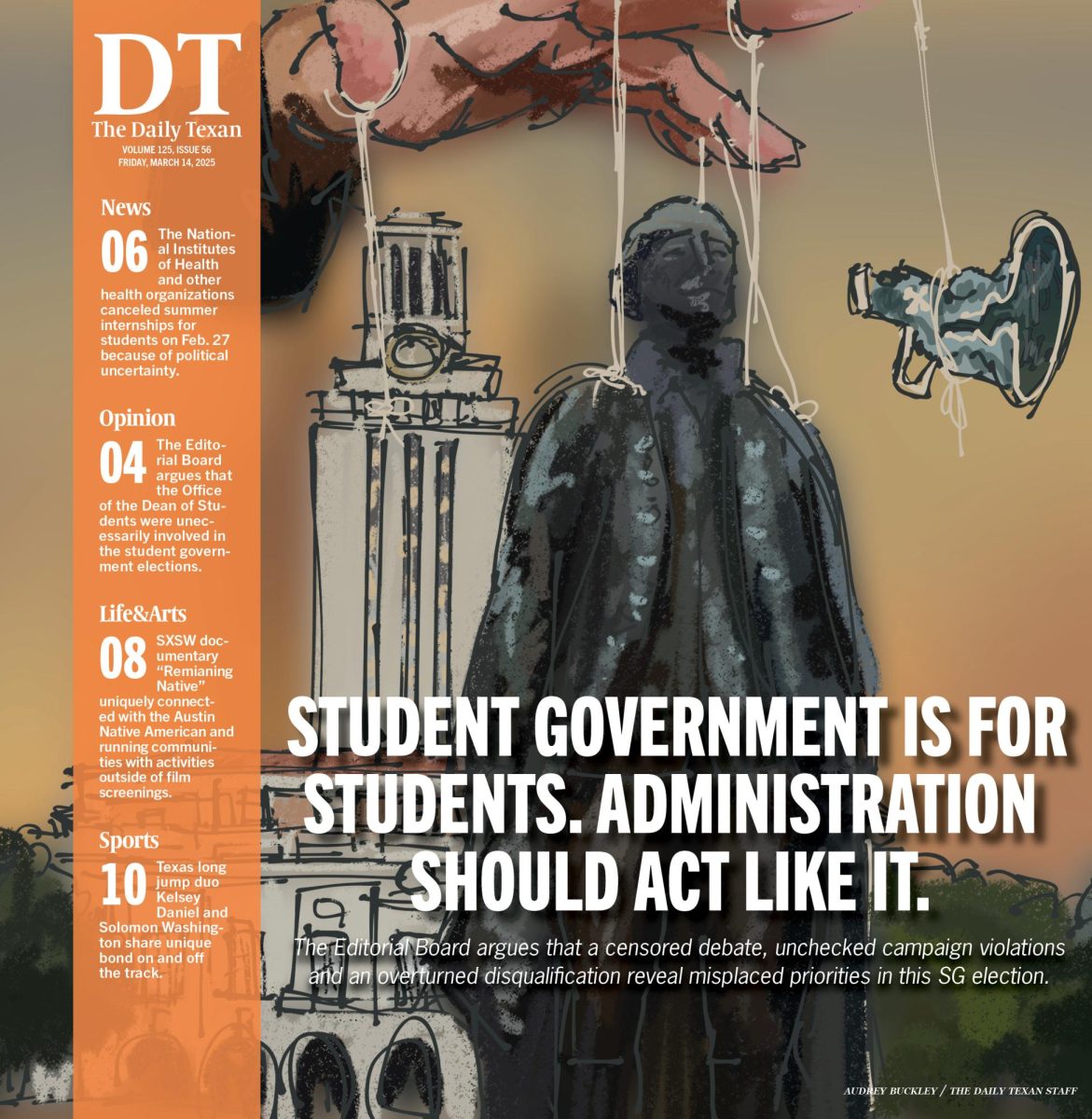Cockrell School of Engineering hosts 6G@UT forum
March 30, 2023
Graduate students presented their research project posters and tech companies showed off their latest developments during a forum hosted at the Cockrell School of Engineering on Wednesday.
Hosted by 6G@UT, a research center at the University, the event welcomed telecommunications company Ericsson and virtual reality company Headwall VR as they exhibited their virtual reality products.
One of the products that was presented is a camera that streams color information and depth, Ericsson experience researcher Gregoire Phillips said.
“This is an example of what we call holographic communications,” Phillips said. “What our product showcases is the ability to send really complex information, color plus depth, over a network and reconstruct it for a realistic experience on these (augmented reality) glasses that allow you to observe projected scenes in the real world and the space around you.”
Augmented reality is a type of technology that displays a computer-generated image over a user’s view of the real world. Virtual reality is similar, except it’s a virtual environment and is not displayed over a real-world view.
Phillips said that the AR glasses and system would apply to different industries, including gaming, telecommunications, industrial production and telemedicine. Right next to Ericsson’s display was Headwall VR.
“Headwall is a way of deploying a command center in virtual reality,” Headwall CEO Geoffrey Bund said. “We provide a visualization platform for ingesting video feeds, GPS data, sensor data and a few others.”
Bund said command centers are anywhere that critical information is viewed. Headwall’s system showed a virtual command center for a fire station in which the vitals of the firefighters could be viewed.
Additionally, the forum also hosted a University research group, the Laboratory for Image & Video Engineering, which is working on exploring and assessing the quality of 3D holograms.
Avinab Saha, a researcher at LIVE Lab, said that the lab showed holograms with distortions to 70-80 human volunteers, who then assigned a quality score to the hologram.
From there, the lab developed an opinion score for every hologram video and created algorithms that other companies and labs can use to help rate the quality of their holograms, Saha said.
“When you have this futuristic technology of holograms coming in, they have a lot of network implications because a lot of data is transmitted from the source to the receiver,” said Saha, an electrical and computer engineering graduate student. “We want to quantify how perceptually humans react to those distortions.”












